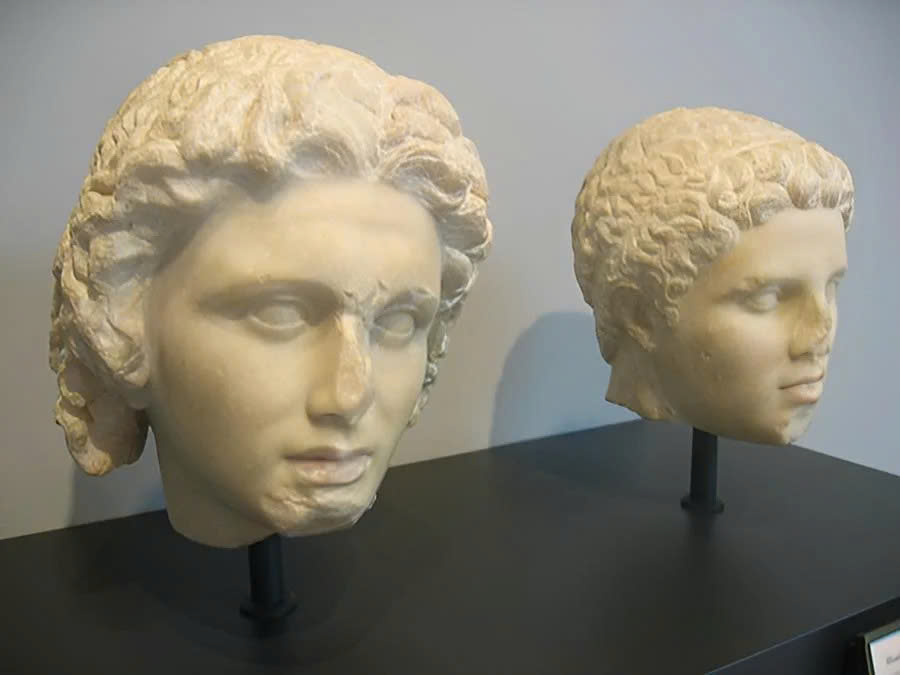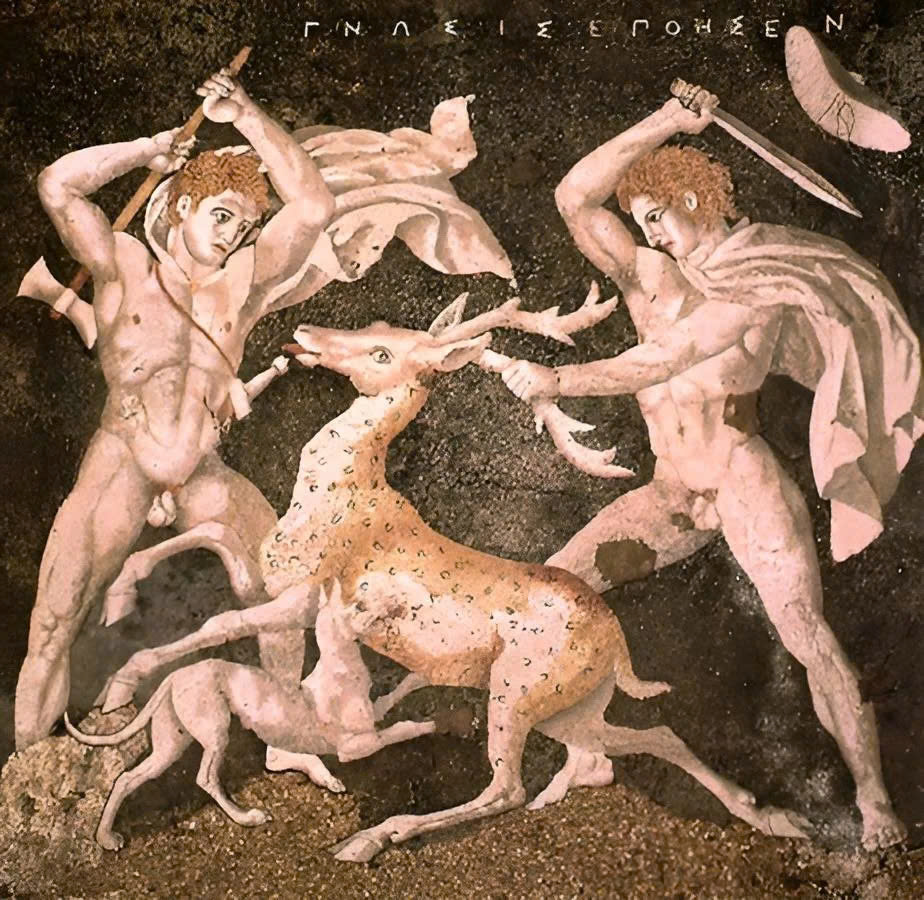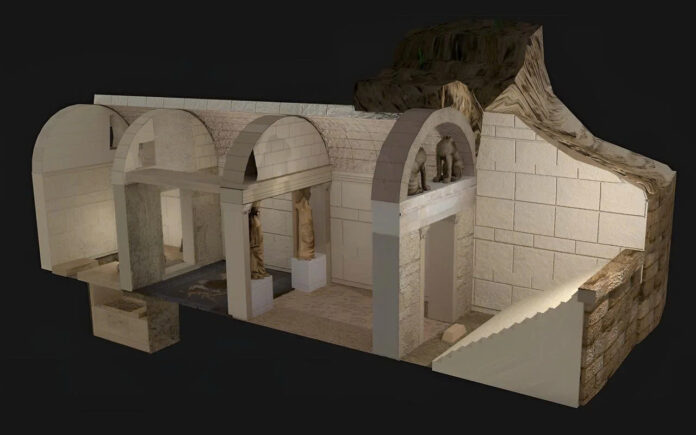In the rolling hills of northern Greece, where ancient Macedonia once flourished, lies one of archaeology’s most fascinating discoveries – a tomb that reveals the sophisticated astronomical knowledge of Alexander the Great’s era. The Kasta tomb at Amphipolis stands as a testament to ancient engineering prowess, designed not merely as a final resting place, but as a cosmic theater where sunlight and stone dance together in perfect harmony.
A Monument Worthy of Legend
The colossal Kasta tomb, unearthed in 2012, represents the largest funerary monument ever found in ancient Macedonia. Its sheer scale and architectural magnificence immediately suggested connections to figures of extraordinary importance in the ancient world. Towering caryatids guard its entrance, their stone faces bearing witness to centuries of silence, while intricate staircases lead visitors deeper into chambers adorned with breathtaking mosaics depicting mythological scenes.
The Mystery of Hephaestion

Scholars widely believe this magnificent structure was commissioned by Alexander the Great himself to honor Hephaestion, his most trusted companion and general. When Hephaestion died in 324 BCE, Alexander’s grief was legendary – he ordered elaborate funeral rites and monuments that would preserve his friend’s memory for eternity. The Kasta tomb, with its unprecedented grandeur, appears to be the ultimate expression of this devotion.
Revolutionary Solar Engineering
Recent research has unveiled the tomb’s most remarkable secret: its deliberate alignment with celestial movements. Using cutting-edge 3D modeling and astronomical simulation technology, researcher Demetrius Savvides discovered that the entire structure was engineered to create a spectacular light show on the winter solstice.
The Solstice Phenomenon
On December 21st each year, as the sun reaches its lowest point in the sky, something extraordinary occurs within the tomb’s chambers. Sunlight penetrates the monument’s entrance and travels through its corridors with surgical precision, ultimately striking a specific location within the inner burial chamber – believed to be where Hephaestion’s sarcophagus once rested.
This wasn’t accidental. Savvides’ research revealed that the tomb’s original orientation was deliberately modified during construction to achieve this solar interaction, transforming the monument into a sophisticated astronomical instrument.
Year-Round Light Symphony
The winter solstice represents just the climax of a year-long celestial performance. Throughout the seasons, sunlight moves systematically through the tomb’s layout, illuminating different architectural elements at precise moments. In autumn, solar rays thread between the guardian sphinxes at the entrance, building toward the dramatic culmination when the burial chamber receives its full illumination on the solstice.
Sacred Symbolism and Spiritual Significance

The tomb’s iconography reinforces its cosmic purpose. Intricate mosaics depict Persephone, the queen of the underworld whose myth embodies the cycle of death and rebirth. Images of Cybele, known as the “Mother of the Gods,” further emphasize themes of renewal and divine protection. Rosettes and ceremonial bull imagery scattered throughout the monument suggest this was more than a burial site – it was a sacred space designed for ritual and spiritual transformation.
The Missing Piece
Savvides theorizes that a statue once stood in the inner chamber, positioned to interact with the solstice sunlight. Evidence includes an empty space within the Persephone mosaic and the upraised hands of the caryatids, which may have once held crowns or ritual objects designed to capture and reflect the sun’s rays. This missing element would have completed the tomb’s function as a bridge between the earthly and divine realms.
Legacy of Celestial Architecture
The Kasta tomb exemplifies how Hellenistic architects masterfully combined astronomy, religious symbolism, and political power. The intentional use of solar alignment to emphasize cosmic order reflected a broader tradition where rulers like Alexander incorporated celestial motifs to legitimize their authority and connect their reigns to divine will.
Video
Engineering Meets Eternity
This ancient marvel demonstrates that the Greeks understood sophisticated astronomical principles centuries before modern technology. The tomb’s creators possessed knowledge that allowed them to predict solar movements with remarkable accuracy, creating a monument that continues to perform its celestial function over two millennia later.
Conclusion: A Timeless Testament

The Kasta tomb stands as more than an archaeological wonder – it represents humanity’s eternal desire to connect with the cosmos and achieve immortality through monumental architecture. Whether shrouded in winter clouds or bathed in solstice sunlight, this ancient masterpiece continues to inspire awe and reveal new secrets about the sophisticated civilization that created it.
In honoring Hephaestion, Alexander the Great commissioned not just a tomb, but a cosmic instrument that transforms death into a celebration of eternal cycles. The winter solstice illumination serves as an annual reminder that even in the darkest moments, light returns, life renews, and legends endure.

